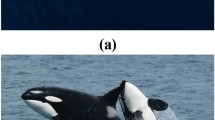Abstract
Supervised learning requires a sufficient training dataset which includes all labels. However, there are cases that some class is not in the training data. Zero-shot learning (ZSL) is the task of predicting class that is not in the training data (unseen class). The existing ZSL method is done for image data. However, the zero-shot problem should happen to every data type. Hence, considering ZSL for other data types is required. In this paper, we propose the cluster-based ZSL method, which is a baseline method for multivariate binary classification problems. The proposed method is based on the assumption that if data is far from training data, the data is considered as unseen class. In training, clustering is done for training data. In prediction, the data is determined belonging to a cluster or not. If data does not belong to a cluster, the data is predicted as unseen class. The proposed method is evaluated and demonstrated using the KEEL datasets.






















Similar content being viewed by others
References
Akata Z, Reed S, Walter D, Lee H, Schiele B (2015) Evaluation of output embeddings for fine-grained image classification. In: The IEEE conference on computer vision and pattern recognition (CVPR), 2015, pp 2927–2936
Akata Z, Perronnin F, Harchaoui Z, Schmid C (2013) Label-embedding for attribute-based classification. In: The IEEE conference on computer vision and pattern recognition (CVPR), pp 819–826
Chao WL, Changpinyo S, Gong B, Sha F (2016) An empirical study and analysis of generalized zero-shot learning for object recognition in the wild. In: European conference on computer vision (ECCV’16), pp 52–68
Fdez JA, Fernandez A, Luengo J, Derrac J, García S, Sánchez L, Herrera F (2011) KEEL data-mining software tool: data set repository, integration of algorithms and experimental analysis framework. J Mult Valued Logic Soft Comput 17(2–3):255–287
Figueiredo MAT, Jain AK (2002) Unsupervised learning of finite mixture models. IEEE Trans Pattern Anal Mach Intell 24(3):381–396
Frome A, Corrado GS., Shlens J, Bengio S, Dean J, Ranzato MA, Mikolov T (2013) DeViSE: a deep visual-semantic embedding model. In: NIPS, 2013, vol 2, pp 2121–2129
Kriegel H, Kroger P, Schubert E, Zimek A (2009) LoOP: local outlier probabilities. In: Proceedings of the 18th ACM conference on Information and knowledge management, CIKM ’09, pp 1649–1652
Larochelle H, Erhan D, Bengio Y (2008) Zero-data learning of new tasks. In: Proceedings of the twenty-third AAAI conference on artificial intelligence (AAAI’08), pp 646–651
Liu S, Long M, Wang J, Jordan MI.(2018) Generalized zero-shot learning with deep calibration network. In: Proceeding NIPS'18 Proceedings of the 32nd international conference on neural information processing systems, pp 2009–2019
MacQueen J (1967) Some methods for classification and analysis of multivariate observations. In: Proceedings of the Fifth Berkeley Symposium on mathematical statistics and probability, vol 1: statistics. University of California Press, Berkeley, pp 281–297
Mikolov T, Sutskever I, Chen K, Corrado GS, Dean J (2013) Distributed representations of words and phrases and their compositionality. In: NIPS’13: Proceedings of the 26th international conference in neural information processing systems, vol 2, pp 3111–3119
Palatucci M, Pomerleau D, Hinton G, Mitchell TM (2009) Zero-shot learning with semantic output codes. In: NIPS'09 Proceedings of the 22nd international conference on neural information processing systems, pp 1410–1418
Pan SJ, Yang Q (2010) A survey on transfer learning. IEEE Trans Knowl Data Eng 22(10):1345–1359
Paredes BR, Torr PH (2015) An embarrassingly simple approach to zero-shot learning. In: ICML'15 Proceedings of the 32nd international conference on international conference on machine learning, vol 37, pp 2152–2161
Socher R, Ganjoo M, Manning CD, Ng AY (2013) Zero-shot learning through cross-modal transfer. In: NIPS'13 Proceedings of the 26th international conference on neural information processing systems, vol 1, pp 935–943
Schubert E, Sander J, Ester M, Kriegel HP, Xu X (2017) DBSCAN revisited, revisited: why and how you should (still) use DBSCAN. ACM Trans Database Syst 42(3):Article 19
Viegasa JL, Estevesb PR, Vieiraa SM (2018) Clustering-based novelty detection for identification of non-technical losses. Int J Electric Power Energy Syst 101:301–310
Wang W, Zheng VW, Yu H, Miao C (2019) A survey of zero-shot learning: settings, methods, and applications. ACM Trans Intell Syst Technol 10(2):Article 13. https://doi.org/10.1145/3293318
Xian Y, Lampert CH, Schiele B, Akata Z (2017) Zero-shot learning—a comprehensive evaluation of the good, the bad and the ugly. In: Proceedings of the IEEE conference on computer vision and pattern recognition, pp 4582–4591
Acknowledgements
We thank Dr. Andres Hernandez-Matamoros for helping the revision. This study is supported by JSPS KAKENHI (Grants-in-Aid for Scientific Research) #JP20K11955.
Author information
Authors and Affiliations
Corresponding author
Additional information
Publisher's Note
Springer Nature remains neutral with regard to jurisdictional claims in published maps and institutional affiliations.
Rights and permissions
About this article
Cite this article
Hayashi, T., Fujita, H. Cluster-based zero-shot learning for multivariate data. J Ambient Intell Human Comput 12, 1897–1911 (2021). https://doi.org/10.1007/s12652-020-02268-5
Received:
Accepted:
Published:
Issue Date:
DOI: https://doi.org/10.1007/s12652-020-02268-5




